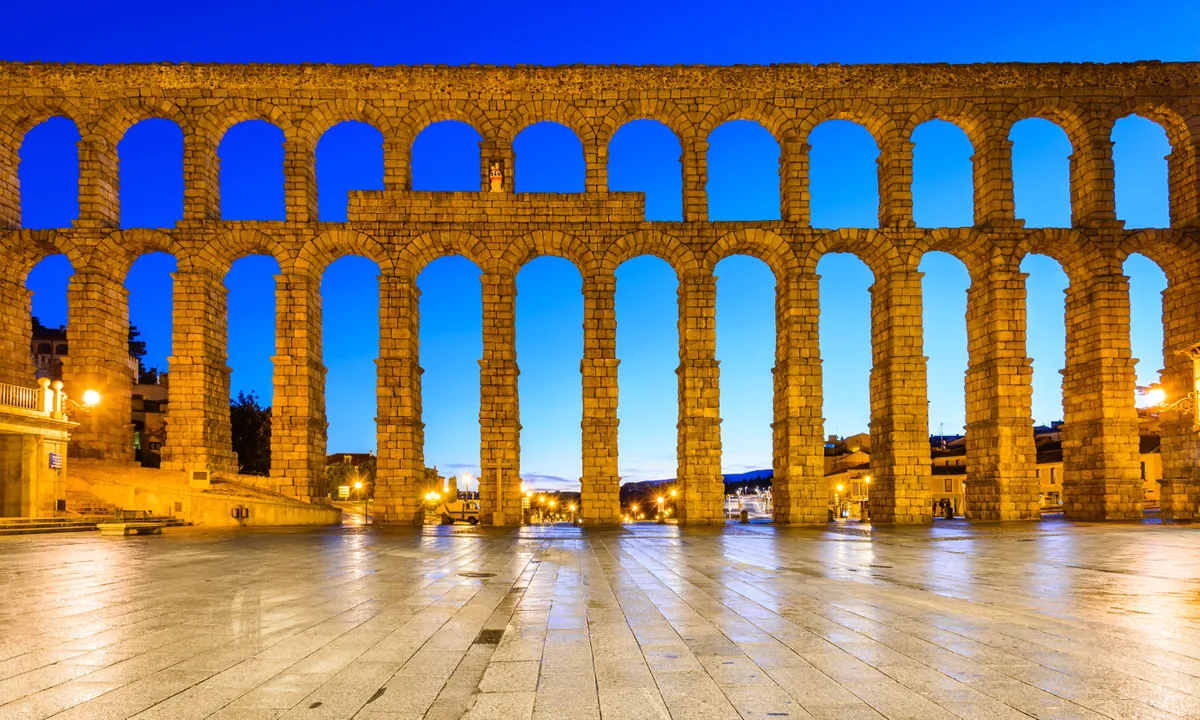The word “aqueduct” stems from a combination of two Latin words: aqua, meaning water, and ducere, to lead. The word in itself thus gives a very basic description of the purpose of any aqueduct: to lead water. They are used to channel water from one place to another, and have been used for millennia.
The very earliest aqueducts were built by the ancient civilisations, such as the Egyptians and the Babylonians, and were about as simplistic as they could be. Then the Romans, the mighty Romans, came along, and turned aqueduct construction on its head. So it may be no surprise that most of the finest examples are Roman in origin, but we’ve tried to mix it up a bit with this list.
The Park of Aqueducts – Rome, Italy
It took almost 550 years for the 11 Roman aqueducts to be built, bringing water to Rome from over 50 miles away, and covering more than 250 miles. This was mostly underground, but roughly 30 miles of it consisted of the famous stone arches.
The Park of Aqueducts is home to the remains of seven of the eleven, with Aqua Claudio being the most visually striking – it reached a height of almost 30 metres!
Tambomachay – Cusco, Peru
Also known as the “Bath of the Incas”, Tambomachay is the most impressive of the Peruvian aqueducts, perhaps even the most impressive in all of South America. A series of interconnected aqueducts, waterfalls and canals, it is thought to have once been a spa for the Incans, who held washing to be an almost sacred act. The beautiful ancient stonework is well worth a visit.
Aqueduct of the Miracles – Mérida, Spain
The Aqueduct of the Miracles is one of three Roman aqueducts built in Mérida in Spain. Thought to have been constructed in the 1st Century, it brought water to the western side of Mérida from an artificial lake about 3 miles away.
It is still remarkably well preserved, though has undergone some much-needed restoration as it was in danger of collapsing. The mixture of red brick and stone makes it unique.
Pontcysyllte Aqueduct – Wrexham, Wales
Originally built during the Industrial Revolution to link Denbighshire’s coal mines to the national canal system, it is both the longest and highest aqueduct in Britain. It’s over 300 metres long, and floats almost 40 metres above the river.

It is a World Heritage Site, and it’s not hard to see why. Visit for the novelty factor alone – get a horse-drawn canal boat ride across the stream in the sky and marvel at the awe-inspiring sight below.
Pont du Gard – Remoulins, France
One of France’s five most popular tourist destinations, Pont du Gard was part of a 30+ mile long canal designed to supply Nimes with fresh water. Another Roman construction, it was built without mortar, with the stones (some weighing more than 5 tonnes) being cut to fit perfectly together, like the Egyptian pyramids.



